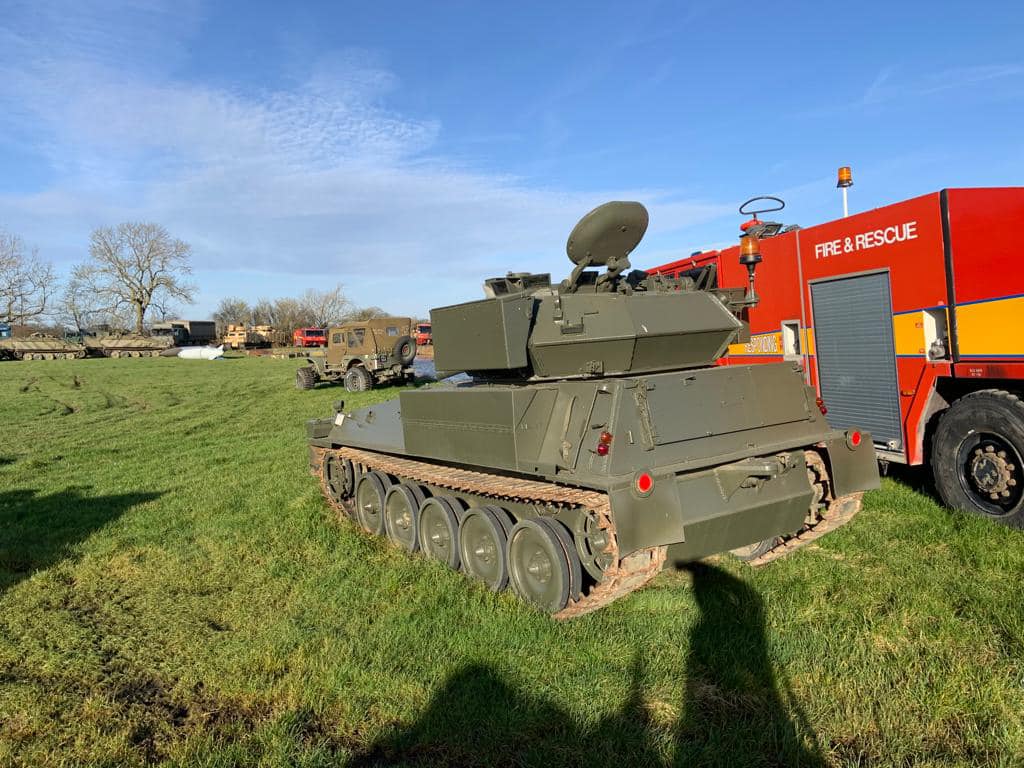A Ukrainian volunteer group is asking the public for monetary donations that would be used to crowdfund a fleet of British FV101 Scorpion armored reconnaissance vehicles, sometimes identified as light tanks, for the country’s ground forces. The Ukrainian Army has already received a number of other variants that belong to this broader family of tracked combat reconnaissance vehicles, which could help with training on and sustainment of the Scorpion should it arrive on the battlefield.
Behind the operation to purchase and deliver Scorpions to Ukraine is the international volunteer organization Armored Turtle, which has been behind other projects that have provided the country with armored vehicles for medical purposes and personnel transport. In a Facebook post shared on March 19, Armored Turtle called upon donors to fund the purchase of an undisclosed amount of Scorpions from Great Britain reportedly costing $110,000 each.

The machine-translated post states that the organization has already found a number of Scorpions, each of which is said to still be in its complete and operational configuration. Armored Turtle claims that this means the vehicles are fully equipped with a working 76mm cannon and unspecified targeting systems, though this is difficult to confirm and would also raise the question of how exactly the Scorpions would be exported to Ukraine if purchased from private hands elsewhere.
Aside from the general mention that the Scorpions would be coming from Great Britain where they originated, Armored Turtle neglected to say from whom the team would be buying the fleet of vehicles, be it a military vehicle collector, the British Government itself, another group associated with the Ministry of Defense, or something else entirely. However, the organization did say that if they raise enough money to successfully purchase the fleet they would “ensure the export of military equipment from Britain and its uninterrupted transit through Europe to Ukraine.”

Scorpion’s origins date back decades. It is one of an extensive family of variants that are all based around a common chassis and core hull design developed beginning in the 1960s to meet a British Army requirement for a Combat Vehicle Reconnaissance (Tracked), or CVR(T). Alvis PLC, which was later acquired by BAE Systems in 2004 and became BAE Systems Land & Armaments, designed the CVR(T) specifically to be a small, air-transportable armored combat vehicle that could replace its Saladin six-wheeled armored car.
The initial Scorpion configuration that was accepted by the British Army in 1970 consisted of a cannon that fired 76mm shells and a coaxial 7.62mm machine gun as well as two banks of three smoke grenade launchers on either side of the turret. The first vehicles to be produced were completed in 1972, and Scorpion shortly thereafter entered service with the British Army in 1973.
Scorpion clocks in at around just eight tons because it is uniquely designed with aluminum armor, which is very lightweight by today’s standards but would still be effective in protecting against indirect fire shrapnel as well as machine gun and some cannon rounds. The vehicle’s hull measures about 17 feet in length with a width of seven feet and a height of just over six feet. Interestingly, Scorpion at one point held the Guinness World Record for the fastest production tank, with a top speed of about 51 mph.

Scorpion vehicles can transport a crew of three, including a commander, a gunner, and a driver. The commander, who is positioned inside the turret, has access to the optical and electronic systems to perform the vehicle’s target acquisition and reconnaissance mission.
While the exact number of Scorpion vehicles produced before the type ultimately left active service in 1994 is difficult to determine because of the several variants that belong to the overall CVR(T) family, the number is believed to be in the thousands. A portion of these vehicles was exported to countries like Belgium, Iran, and Ireland, though the majority belonged to the British Army.

Among the variants in the CVR(T) family that Ukraine has been given since Russia launched its full-scale invasion of the country last February is the FV103 Spartan. This model is a tracked armored personnel carrier (APC) developed specifically as an APC variant of the CVR(T) requirement that entered service with the British Army in 1978.
In fact, just like Armored Turtle is trying to do with Scorpion, the purchase of the Spartans was successfully crowdfunded by the Serhiy Prytula Foundation earlier this year. The organization was able to buy 101 Spartans for Ukrainian ground forces in all with the nearly $6.6 million it had raised, and 24 of the vehicles are said to already be in theater.
According to data compiled by Oryx, a blog that has used open-source intelligence and visual evidence to keep track of material losses throughout the conflict, CVR(T) variants that Ukraine has also received include the FV104 Samaritan armored ambulance and Alvis Stormer armored vehicle that is essentially a more modernized development of the CVR family. It’s worth noting, too, that Armored Turtle’s Facebook page also displays a photo of at least one FV107 Scimitar armored reconnaissance vehicle, though it is unclear if this type has since ended up in Ukraine.

As noted earlier, with multiple models of the CVR(T) series already in operation with Ukrainian forces, conducting training and maintenance on what may become their fleet of Scorpions could prove to be a comfortable transition. With all the new vehicles, aircraft, and weapons systems constantly flowing into Ukraine, many of which require weeks or months-long training programs to properly equip operators with the necessary skill sets, Scorpion’s commonality with existing vehicles would likely be a welcome perk.
It will be interesting to see if Armored Turtle is able to garner enough donations to purchase the Scorpions for Ukraine, and with that, what exactly the decades-old vehicles could bring to the fight once there. If the past crowdfunding efforts of other Ukrainian volunteer groups are any indication, Scorpion’s emergence on the battlefield could very well happen in the not-so-distant future.
Contact the author: Emma@thewarzone.com
